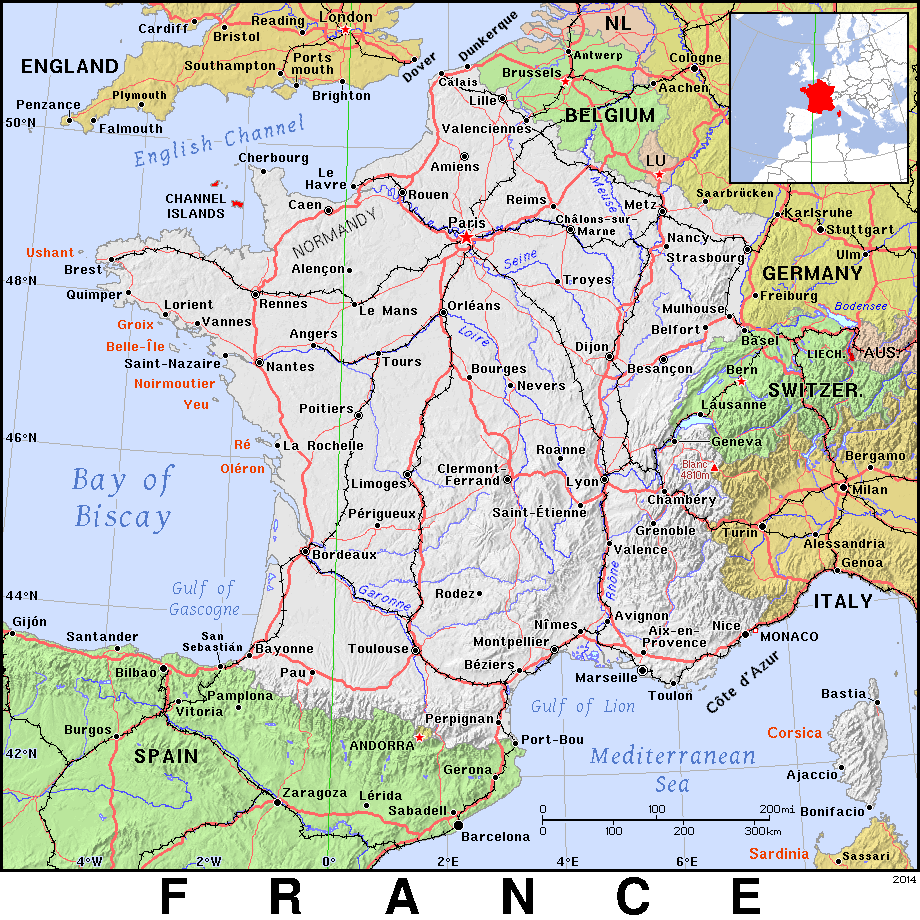
Updated January 2025.
Contents –
- Fossil Fuel CO2 Emissions
- Fossil Fuel Production
- Energy Consumption prior to partial conversions to Electricity
(PRIMARY ENERGY) - Energy Consumption after partial conversions to Electricity
(FINAL ENERGY) - Electricity Generation
The Introduction explains the units and terminology used here. Links shown in the footnotes of the charts are listed below:
Fossil Fuel Carbon Dioxide (CO2) Emissions
National fossil fuel CO2 emissions of France in 2023 were 0.7% of World total, and are included in the collection of boxes in the bottom right of the right-hand chart below.
Fossil Fuel Production
World shares –
Energy Consumption prior to partial conversions to Electricity
(PRIMARY ENERGY)
Fossil fuel primary energy trends are shown below. For comparison, global values in 20231 were:
- Coal 164,000PJ
- Oil 196,000PJ
- Gas 144,000PJ
As explained in the Introduction, primary energy is the consumption of energy prior to partial conversions to electricity, so the quantities below show the consumption of fossil fuels for both electricity generation, and heat by direct combustion (e.g. coal for steel manufacture or combustion of oil products by transport).
Primary energy trends of non-combustible fuels, such as wind and solar, are not shown here because such quantities are theoretical; they represent the quantity of fossil fuel energy that would need to be input to a thermal power station to generate equivalent respective quantities of electricity. Therefore the claim that an energy system is a specific share fossil fuelled is inaccurate, and perhaps should be avoided. Non-combustible fuel statistics are shown in latter sections below.
Energy Consumption after partial conversions to Electricity
(FINAL ENERGY)
Fossil fuel primary energy trends are shown below. As explained in the Introduction, primary energy is the consumption of energy prior to partial conversions to electricity, so the quantities below show the consumption of fossil fuels for both electricity generation, and heat by direct combustion (e.g. coal for steel manufacture or combustion of oil products by transport).
Primary energy trends of non-combustible fuels, such as wind and solar, are not shown here because such quantities are theoretical; they represent the quantity of fossil fuel energy that would need to be input to a thermal power station to generate equivalent respective quantities of electricity. Therefore the claim that an energy system is a specific share fossil fuelled is inaccurate, and perhaps should be avoided. Non-combustible fuel statistics are shown in latter sections below.
Shares for most recent year of data –